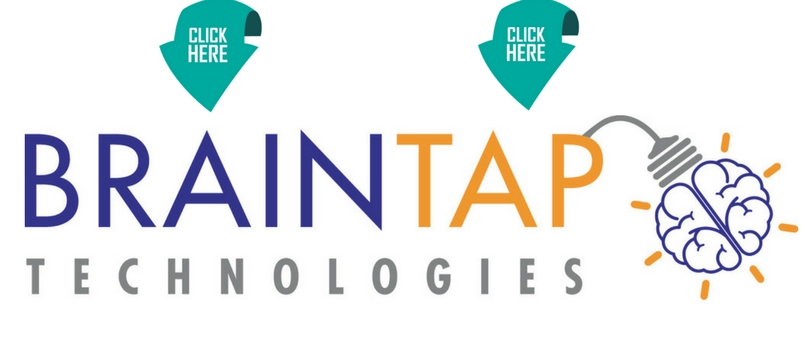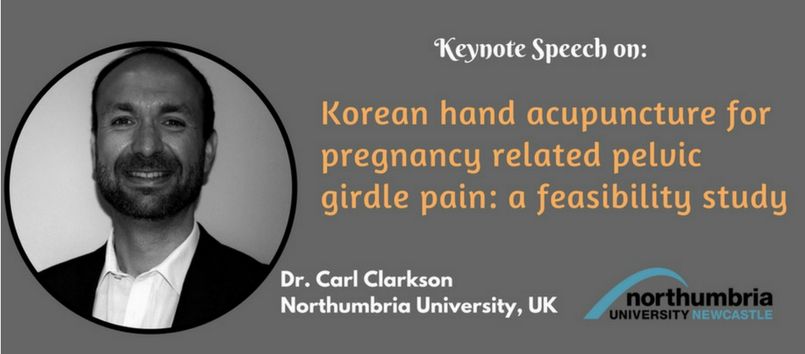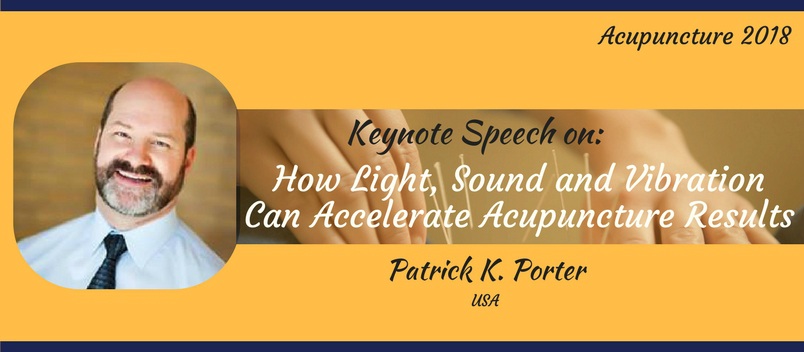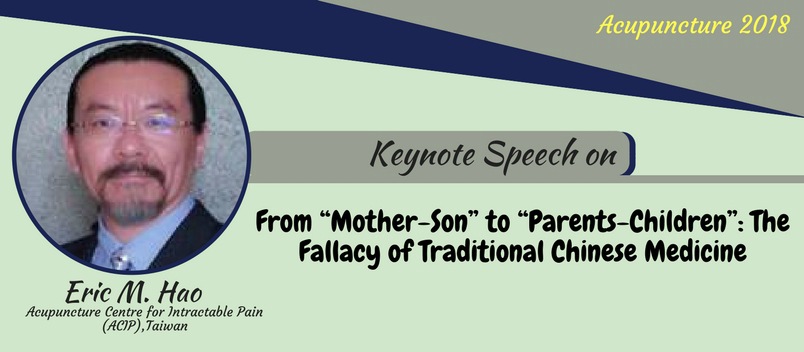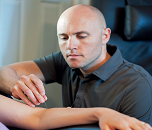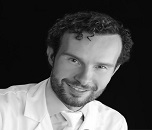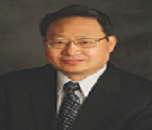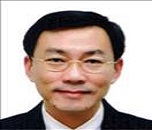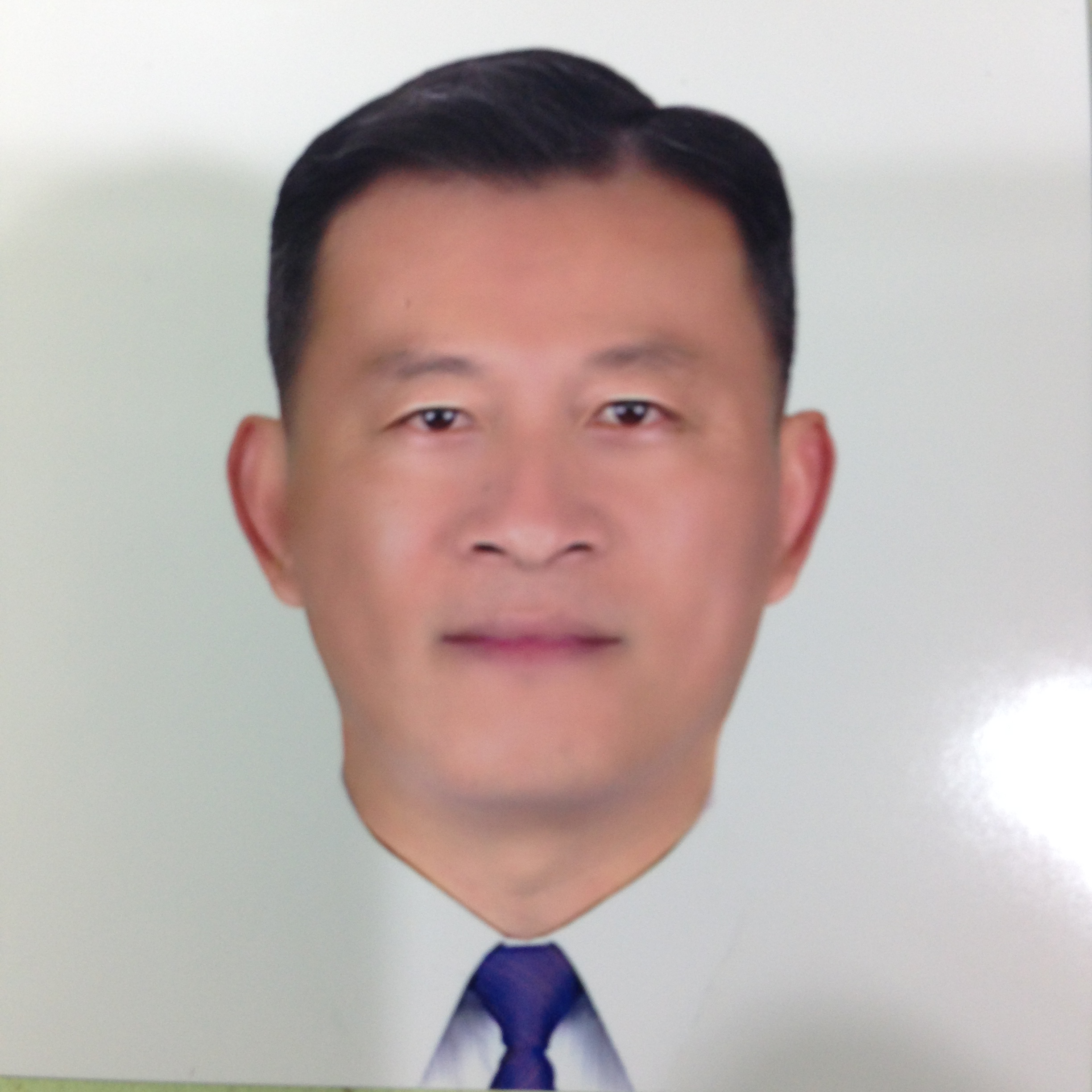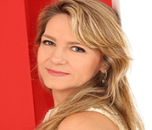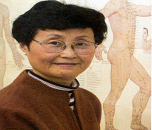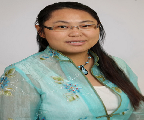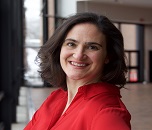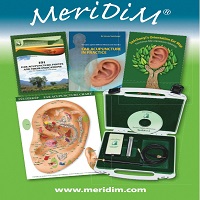Track 1: Clinical Practice of Acupuncture
People use acupuncture to relieve pain and treat certain health conditions. You can use it by itself or as part of a treatment program. Studies have found promising results for the use of acupuncture to treat nausea and vomiting related to pregnancy, chemotherapy, and post-surgery pain. Acupuncture also may be useful for stroke rehabilitation, headache and tennis elbow and so on.
-
Lower back pain
-
Migraine and headache
-
Osteoarthritis
-
Postoperative nausea and vomiting
-
Allergies Integrative oncology- Post treament care
-
Acupuncture – asthma treatment
Related Associations and Societies
Acupuncture Association of Colorado, Acupuncture Association of Missouri, American Association of Acupuncture and Oriental Medicine (AAAOM), American College of Healthcare Sciences, The British Medical Acupuncture Society
Track 2: Acupuncture Related Practices
Acupressure, a non-invasive form of acupuncture, uses physical pressure applied to acupressure points by the hand, elbow, or with various devices. Tui Na is a Traditional Chinese Medicine i.e. a TCM method of attempting to stimulate the flow of Qi by various bare-handed techniques that do not involve needles. Electropuncture is a form of acupuncture in which acupuncture needles are attached to a device that generates continuous electric pulses. Sonopuncture is a stimulation of the body similar to acupuncture using sound instead of needles. This may be done using purpose-built transducers to direct a narrow ultrasound beam to a depth of 6–8 centimetres at acupuncture meridian points on the body. Alternatively, tuning forks or other sound emitting devices are used. Auriculotherapy, commonly known as ear acupuncture or auricular acupuncture is considered to date back to ancient China which involves inserting needles to stimulate points on the outer ear. Scalp acupuncture, developed in Japan, is based on reflexological considerations regarding the scalp area.
-
Auricular therapy
-
Tui na
-
Dry needling
-
Acupressure
-
Naturopathic acupuncture
-
Massage Therapy
Related Associations and Societies
American Medical Association, Australian Acupuncture and Chinese Medicine Association, American Holistic Medical Association, Australian Acupuncture and Chinese Medicine Association, Traditional Chinese Medicine and Acupuncture Society
Track 3: Acupuncture Techniques
In Acupuncture very thin needles, slightly thicker than a human hair, are inserted into acupuncture points. The objective of acupuncture as explained earlier is to regulate and normalize the flow of the Chi, so that the Yin and the Yang return to a state of dynamic equilibrium. Acupuncture aims to relieve symptoms by curing the disease. The choice of acupuncture points to be used is the most crucial part of the treatment. The acupuncturist must know the function of each acupuncture point and its interaction with other acupuncture points. He can then plan the treatment to eliminate obstructions in the flow of Chi and to balance the Yin and Yang. After the acupuncturist has examined the patient and reached a diagnosis, he decides how the patient should be treated.
-
Electro-acupuncture stimulation
-
Sonopuncture
-
Trigger point acupuncture
-
Scalp acupuncture
-
Korean hand acupuncture: New aspects
-
Japanese acupuncture
-
Chinese acupuncture
Related Associations and Societies
Australian Natural Therapists Association ANTA, Australian Traditional Medicine Association ATMS, British Acupuncture Council (BAcC), European Herbal & Traditional Medicine Practitioners Association National Association, The Arizona Society of Oriental Medicine & Acupuncture (AzSOMA)
Track 4: Acupuncture & Neurology
Acupuncture often used with electrical stimulation in treating nerve conditions, is very effective at relieving the pain and restoring normal function. There are several ways this is thought to work, all of which have been carefully researched mainly acupuncture stimulates the brain to release chemicals such as neurotransmitters and opioids into the body that reduce sensitivity to pain and normalize the nervous system or acupuncture with electrical stimulation interrupts the pain signal allowing the nerve to calm down thereby reducing pain. Acupuncture promotes actual healing by altering the body's electrical system to allow the transfer of material and electrical energy between normal and injured tissue thereby reducing the amount of recovery time.
-
Insomnia
-
Treatment of Parkinson
-
Treating nerve damage (peripheral nerves)
-
Effectively treat PTSD (Post Traumatic Stress Disorder)
-
Acupuncture in paralysis treatment
Related Associations and Societies
European Traditional Chinese Medicine Association, Florida State Oriental Medical Association, Greek Association of Chinese Medicine, International Acupuncture Association of Physical Therapists, Kentucky State Acupuncture Association, The Connecticut Society of Acupuncture and Oriental medicine (CSAOM)
Track 5: Traditional Chinese Medicine
TCM encompasses many different practices, including acupuncture, moxibustion (burning an herb above the skin to apply heat to acupuncture points), Chinese herbal medicine, tui na (Chinese therapeutic massage), dietary therapy, and tai chi and qi gong (practices that combine specific movements or postures, coordinated breathing, and mental focus). TCM is rooted in the ancient philosophy of Taoism and dates back more than 2,500 years. Traditional systems of medicine also exist in other East and South Asian countries, including Japan (where the traditional herbal medicine is called Kampo) and Korea. Some of these systems have been influenced by TCM and are similar to it in some ways, but each has developed distinctive features of its own.
-
Qi theory and meridans
-
Acupuncture points & CNS
-
Acupuncture and the placebo question
-
Massage (tui na)
-
Exercise (qigong)
-
Dietary therapy
Related Associations and Societies
National Acupuncture Detoxification Association, National Centre for Complementary and Integrative Health (NCCIH), National Qigoing Association, Native American Legends, North Carolina Association for Acupuncture and Oriental Medicine (NCAAOM), Maryland Acupuncture Society
Track 6: Traditional Korean medicine
Traditional Korean medicine encompasses many different practices, including Acupuncture, moxibustion (burning an herb above the skin to apply heat to acupuncture points), Aromatherapy (treating bodily ailments using essential plant oils), Meditation (Self-directed practice for the purpose of relaxing and calming the mind and body), Herbal medicine (tudy and practice of using plant material for the purpose of food, medicine, or health) With the increase in the number of Korean immigrants coming to the United States in recent years it has become important for modern medicine to understand these traditional healing techniques and how they are used. Statistical analysis of experiments involving more traditional remedies including herbal supplements and acupuncture have found that a patient's mental state is more relaxed.
-
Acupuncture
-
Moxibustion
-
Aromatherapy
-
Meditation
Related Associations and Societies
Northwest Holistic Medicine, Pancyprian Association of Acupuncturists Limited, Society for Acupuncture Research (SAR), Society the Individual and Medicine, Swedish Acupuncture Association of Traditional Chinese Medicine, Taoist Association for Holistic Healing, Acupuncture Society of Massachusetts (ASM)
Track 7: Oriental Medicine
Oriental medicine has been practiced for more than 2,500 years and includes acupuncture, herbal medicine, moxibustion, Oriental massage and Oriental nutrition. It is a system of medicine that categorizes body patterns into specific types of diagnoses with corresponding treatment plans. Oriental medicine is practiced in China, Japan, Korea, Viet Nam, Thailand, Tibet and India. One may be surprised to find that Oriental medical theory and practice has spread to France, England, Spain, Germany, Russia, much of Middle and South America, and Africa. It has gained worldwide acceptance and recognition as effective medical treatment. Due to the sheer weight of evidence, Oriental medicine demands that it be taken seriously as a clinical approach of considerable value. Over 15 million Americans have turned to it, making it the complementary treatment of choice for Americans everywhere.
-
Oriental nutrition
-
Oriental massage
-
Moxibustion
-
Acupuncture
Related Associations and Societies
Texas Association of Acupuncture & Oriental Medicine, The Association of Traditional Chinese Medicine and Acupuncture UK, The Chinese Medicine and Acupuncture Association of Canada, The Maine Association of Acupuncture and Oriental Medicine (MAAOM), Utah Association for Acupuncture & Oriental Medicine, The Acupuncture Society of New York (ASNY)
Track 8: Advancements in Acupuncture Treatment Strategies
Laser acupuncture has included advanced brain imaging, as well as several other modern protocols for measuring various physiological effects to the body. These studies show that laser acupuncture has physiological effects, not only locally, but also in the brain, similar to needle acupuncture. Laser on Urinary Bladder 67, for example, shows measurable effects in the brain. The effects were only detected when the laser was turned on. When the laser was turned off, no effects were detected. Good effects of laser acupuncture for the following conditions: hiccups, bed wetting, weight loss, post-operative nausea and vomiting, pain control, surgical anaesthesia, dental anaesthesia, carpal tunnel syndrome, dry eyes, and stroke-related paralysis.
-
Helping people quit smoking
-
Treating nerve damage (Peripheral Nerves)
-
Laser acupuncture (Laser needles)
-
Teleacupuncture
-
Therapeutic effects of stimulating acupuncture points with coloured light
Related Associations and Societies
World Association of Traditional Chinese Veterinary Medicine, World Confederation for Physical Therapy, The Chinese Medicine and Acupuncture Association of Canada, Rhode Island Society of Acupuncture and Oriental Medicine, The Canadian Society of Chinese Medicine and Acupuncture (CSCMA)
Track 9: Acupuncture for addiction recovery & depression: (Ear and Electro acupuncture)
Acupuncture is becoming a complementary treatment in addiction recovery programs. Ear and Auricular acupuncture is a popular form of this treatment that involves insertion of a thin needle at various points on the skin of the external ear to help ease withdrawal symptoms and reduce cravings. Acupuncture is both safe and cost-effective. When combined with other forms of treatment, such as individual therapy, group counselling, and support groups, it can benefit those suffering from a substance addiction. The practice can reduce cravings, increase patient retention in rehab, ease unpleasant withdrawal symptoms, decreases anxiety and stress and reduces pain.
A developing number of individuals are utilizing alternatives, and new research proposes that Acupuncture could be a promising alternative. One new investigation observed the Traditional Chinese practice to be as viable as antidepressants, and an alternate report found that needle therapy may help treat the depression.
Related Associations and Societies
International Acupuncture Association of Physical Therapists, Kentucky State Acupuncture Association, American Addiction Centers, The Cabin Addiction Services Group, Addiction Services of Thames Valley, Addiction Services Council Cincinnati, Drinkaware, National Alcoholism Center, AddictionCenter, Michael's House Treatment Centers, Moholoholo, Alcohol Rehab in Hong Kong, The British Acupuncture Council (BAcC)
Track 10: Cupping therapy
Cupping therapy is an ancient form of alternative medicine in which a therapist puts special cups on your skin for a few minutes to create suction. People get it for many purposes, including to help with pain, inflammation, blood flow, relaxation and well-being, and as a type of deep-tissue massage.
-
Wet cupping
-
Dry cupping
-
Fixed cupping
-
Moving cupping/gliding cupping
Related Associations and Societies
Northwest Holistic Medicine, Pancyprian Association of Acupuncturists Limited, Society for Acupuncture Research (SAR), Society the Individual and Medicine, Swedish Acupuncture Association of Traditional Chinese Medicine, Taoist Association for Holistic Healing, Acupuncture Society of Virginia
Track 11: Acupuncture & Pain Management
The methods of acupuncture are based on the belief that the body contains patterns of energy flow referred to as qi. Proper, unimpeded flow of qi is believed to be essential for the maintenance of proper health, and needles applied to specific acupuncture points are believed to help correct and balance that flow. Due to its ability to stimulate the central nervous system, acupuncture has the potential to significantly affect the perception of back and neck pain.
-
Acupuncture and chronic pain
-
Acupuncture strategies in pain management
-
Biomedical acupuncture for pain treatment and care
-
Acupuncture pain relief points
-
Clinical applications and case studies
Related Associations and Societies
Northwest Holistic Medicine, Pancyprian Association of Acupuncturists Limited, Society for Acupuncture Research (SAR), Society the Individual and Medicine, Swedish Acupuncture Association of Traditional Chinese Medicine, Taoist Association for Holistic Healing, Wisconsin Society of Certified Acupuncturists, Inc. (WISCA)
Track 12: Pet Acupuncture
Acupuncture is used mainly for functional problems such as those involving noninfectious inflammation, paralysis, or pain. For small animals, acupuncture has been used for treating arthritis, hip dysplasia, lick granuloma, feline asthma, diarrhea, and certain reproductive problems. For larger animals, acupuncture has been used for treating downer cow syndrome, facial nerve paralysis, allergic dermatitis, respiratory problems, nonsurgical colic, and certain reproductive disorders. Acupuncture has also been used on competitive animals, such as those involved in racing and showing. Veterinary acupuncture has also recently been used on more exotic animals, such as an alligator with scoliosis, though this is still quite rare.
-
Electroacupuncture on Animals
-
Traditional Chinese veterinary medicine (TCVM)
-
Lasers
-
Implantation
Related Associations and Societies
American Medical Association, Australian Acupuncture and Chinese Medicine Association, American Holistic Medical Association, Australian Acupuncture and Chinese Medicine Association, Traditional Chinese Medicine and Acupuncture Society, Acupuncture Society of Washington, D.C. (ASDC)
On behalf of Acupuncture 2018 Organizing Committee, we cheerfully welcome needle therapy mastery, educators, established researchers, specialists, advisors, understudies and business agents to attend the 6th International Conference and Expo on Acupuncture and Oriental Medicine which is to be hung on April 18-19, 2018, Las Vegas, USA. The conference deliberations will be carried under the theme “Acupuncture and Oriental Medicine: A True Devotion to Healing”.
The conference proceedings include symposiums and workshops, keynote speeches, plenary talks, poster sessions and panel discussion on latest research developments in the field of Acupuncture. Acupuncture is a form of alternative medicine and a major component of Traditional Chinese Medicine which involves inserting needles into the body at acupuncture points, acupuncture as an effective treatment for over forty medical problems, including allergies, respiratory conditions, gastrointestinal disorders, gynecological problems, nervous conditions and also has been used in the treatment of substance abuse and as relief for fatigue in cancer patients due to chemotherapy and other therapies.
Why to attend?
The use of acupuncture is widespread as it is being used effectively as an integrated treatment with a fewer side effects than western medicine and is a potential alternative to pain medications or steroid treatments. This unique conference will offer a platform for Eastern medicine to meet with Western medicine and will bring together researchers, practitioners, educators and other healthcare professionals, business delegates, students and young researchers all across the globe and shall serve as an opportunity to present and discuss recent advances in acupuncture research that have the potential to strengthen the base for its integration in health care to modernize the art of acupuncture.
Conference series organizes a conference series of 1000+ Global Events inclusive of 300+ Conferences, 500+ Upcoming and Previous Symposiums and Workshops in USA, Europe & Asia with support from 1000 more scientific societies and publishes 700+ Open access journals which contains over 30000 eminent personalities, reputed scientists as editorial board members.
Target Audience:
Acupuncturists
Acupuncture faculty
Acupuncture practitioners
Oriental medicine faculty
Herbal practitioners
Psychiatrists
Therapists & Acupuncture counselors
Acupuncture students, scientists
Treatment, Healing Centers and Rehabilitation Houses
Relevant Association and Societies
Medical colleges
Business professionals (Directors, presidents, CEO) from Acupuncture market
CONFERENCE OPPORTUNITIES:
For Researchers and Faculty members:
-
Speaker presentations
-
Poster presentation
-
Symposium hosting
-
Workshop organizing
For Universities, Associations & Societies:
-
Association partnering
-
Collaboration proposals
-
Academic partnering
-
Group participation
For students and Research scholars:
-
Poster competition
-
Young Researcher Forum
-
Student attendee
-
Group registrations
For Business Delegates:
-
Speaker presentations
-
Symposium hosting
-
Book launch event
-
Networking opportunities
-
Audience participation
For product manufacturers:
-
Exhibitor and Vendor booths
-
Sponsorship opportunities
-
Product launch
-
Workshop organization
-
Scientific partnering
-
Marketing and Networking with clients
Importance and Scope
The (WHO) World Health Organization recommends Acupuncture as an effective treatment over forty medical problems, including respiratory conditions, allergies, gastrointestinal disorders, nervous conditions, and the eyes, nose and throat disorders, and childhood illnesses, among others. Acupuncture has been used in the treatment of alcoholism and substance abuse. It is a low-cost and effective treatment for headaches and chronic pain, associated with problems like back injuries and arthritis. It has also been used to supplement invasive Western treatments like Surgery and Chemotherapy.
Acupuncture and Moxibustion, is one of the oldest practices of Traditional Chinese Medicine. The first legal acupuncture centre in the U.S. was established in Washington DC in 1972.
The out-of-pocket expenditure for Complementary and Alternative Medicine in United States was nearly 34 billion dollars in 2007. Visits to a health care practitioner of any kind totalled $61.5 billion, of which, $11.9 billion was spent on Complementary and Alternative medicine providers such as chiropractors and acupuncturists. Over 3.1 million adults visited an acupuncturist in 2007, a figure that has increased sharply over the past decade, in 1997 there were 27 visits to an acupuncturist per 1,000 adults compared to 80 visits in 2007. More than 14 million Americans reported having used acupuncture as part of their health care by the early 2010s,. By 2016, Complementary and Alternative Medicine industry revenue is expected around 14.3 billion U.S. dollars in the United States. Globally, the industry is estimated to be worth some $60 billion a year.
In China since 1999 the government has promoted the development of Community Health Services Centres as major providers of primary healthcare, which includes the practice of moxibustion and acupuncture. There are currently 4169 Complimentary Medicine hospitals in China (including Western medicine and integrated CM hospitals), and more than 90 % of these hospitals have an acupuncture and moxibustion department.

Major instrumentation industries
Shenzhou® Acupuncture Needles
Suzhou Huanqiu Acupuncture Medical Appliance Co., Ltd.
Seirin Co. Ltd.
Maanshan bond medical instruments Co. Ltd.
The Phoenix Medical
Lhasa OMS
Scarboroughs Ltd
DongBang AcuPrime Ltd
Herbprime Co. Ltd.
Oxford Medical Supplies Ltd
Moxom Acupuncture Kft
AcuMedic Ltd.
The Office of Alternative Medicine of the National Institute of Health is currently funding research in the use of acupuncture along with British Acupuncture Council (BAcC), Council of Acupuncture, Oriental Medicine Research Trust (OMRT) and National Centre for Complementary and Alternative Medicine(NCCAM).
National Centre for Complementary and Integrative Health (NCCIH) has a gross funding of $123.984 million by the end of financial year 2014.
The top universities
Guangzhou Pharmaceutical University
Nanjing University of Chinese Medicine
Beijing University of Chinese Medicine
Shanghai University of Chinese Medicine
Chengdu University of Chinese Medicine
Top universities and colleges (USA)
American College of Traditional Chinese Medicine
Northwestern Health Sciences University
Bastyr University
Pacific College of Oriental Medicine
Oregon College of Oriental Medicine
Top associations and Societies
National Centre for Complementary and Integrative Health (NCCIH)
British Acupuncture Council (BAcC)
Society for Acupuncture Research (SAR)
American association of acupuncture and oriental medicine (AAAOM)
The Association of Traditional Chinese Medicine and Acupuncture UK
World Confederation for Physical Therapy
National Acupuncture Detoxification Association
British Medical Acupuncture Society
International Acupuncture Association of Physical Therapists
Traditional Chinese Medicine and Acupuncture Society
Target Audience
Directors/Managers & Business Delegates, Director of Universities, Acupuncturists, Acupuncture faculty, Acupuncture practitioners, Oriental medicine faculty, Therapists & Acupuncture counsellors, Treatment, Healing Centres and Rehabilitation Houses, Herbalists, Relevant Association and Societies, Post-Doctoral Fellows, Researchers, Students.
Future of Acupuncture

The future for acupuncture is bright. It is cost-effective, it can provide a safe, side effect-free method. In 2007, 3.1 million people tried acupuncture, more than in 2002, to relieve discomfort caused by chemotherapy-induced nausea and vomiting, fibromyalgia, low back pain, and other ailments. It is expected by the end of the year 2019 there will be as many as 30000 licensed acupuncturists at work in the United States. The FDA had a record of more than 20,000 licensed acupuncturists, estimated to be providing more than 10 million treatments yearly at a cost in excess of $500 million.
The future for the acupuncture profession depends on its communities of interest. The professional association needs more participation. It is no longer "what is my professional association doing for me?" We have greater, ethical and moral obligations to humanity in terms of sustaining this discipline as a community of the knowledge. It really is about what each and every one of us does in support of the profession.

